On Tuesday we went on a tour to three popular museums in Seoul that centered around the history of Korea and the history of Hangul.


When we first arrived in Gwanghwamun Plaza, we were able to see the statue of King Sejong and the statue of Admiral Yi Sun-sin.

The beautiful view of Gyeongbokgung lay beyond the two statues. I was amazed by the statues and the palace because I have never seen anything like them before. I learned some of the history behind the story of King Sejong before visiting the area, so it was interesting to be able to see his statue up close and to be able to appreciate the history behind it.

These are two of King Sejong’s inventions. One is an astronomical clock, also known as honcheoneui, which is used as a clock during the day and at night. Behind it was a rain gauge, also known as cheugugi, which was used to measure rain water.



The first museum we visited was the National Museum of Korea Contemporary History. It is located near the Gyeongbokgung Palace. I was given a listening device that provided me more information as I walked through the museum. The exhibitions related to Korean history, politics, society, and culture.

It was sad to learn about the hardships Korea faced in the past. The exhibits also included information about the Korean independence movement during the Japanese colonial era, recovery after the Korean War, the growth of the economy, and modern advancements made in the country.



The next place we went to was the National Museum of Korea. I was amazed by the unique architecture of the giant building. You could see Namsan tower beyond the museum.

The entrance and great hall of the museum provided a big open space to walk around before entering the exhibits.

This is a ten-story pagoda from Gyeongcheonsa Temple.

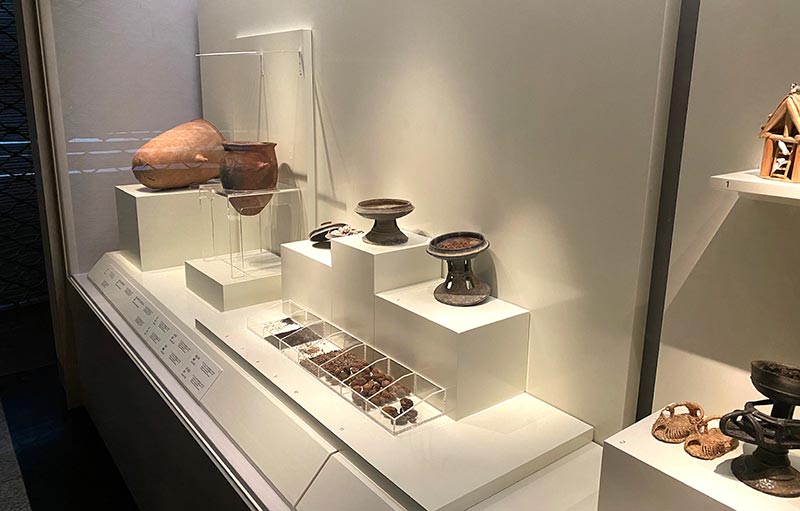
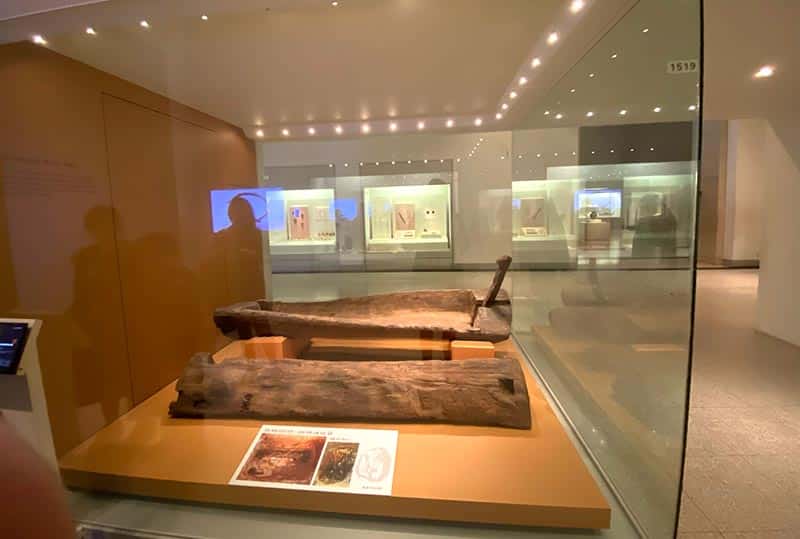
The first floor of the museum included medieval and early modern history. I was able to learn more about the period of the Three Kingdoms and I got to admire beautiful ornaments, crowns, and other artifacts from different periods.

The second floor held a gallery full of calligraphy and paintings. I was able to appreciate the beauty of traditional Korean paintings and calligraphy. The third floor held artwork such as sculptures and other crafts. It included pieces representing other cultures and traditions from other countries such as Egypt, Central Asia, India, Southeast Asia, China, and Japan. This was my favorite museum because it offered a great insight into the history of Korea while including many artifacts throughout the periods.
The last museum we visited was the National Hangeul Museum. This museum provided information on the history of Hangeul, invented by King Sejong in 1443.
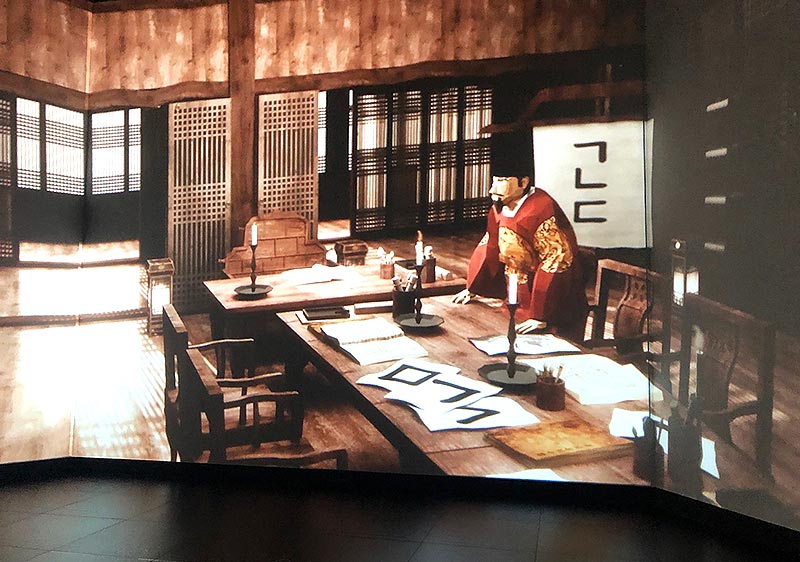
We watched a video that showed King Sejong and the process of him creating Hangeul. I enjoyed seeing how he created the characters from the Chinese characters that were originally used. I learned that King Sejong created Hangeul to make it easier for others to read and write.

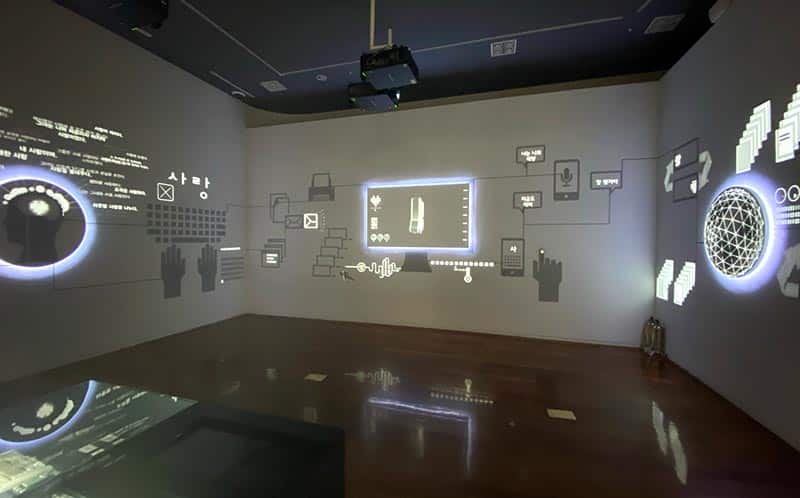
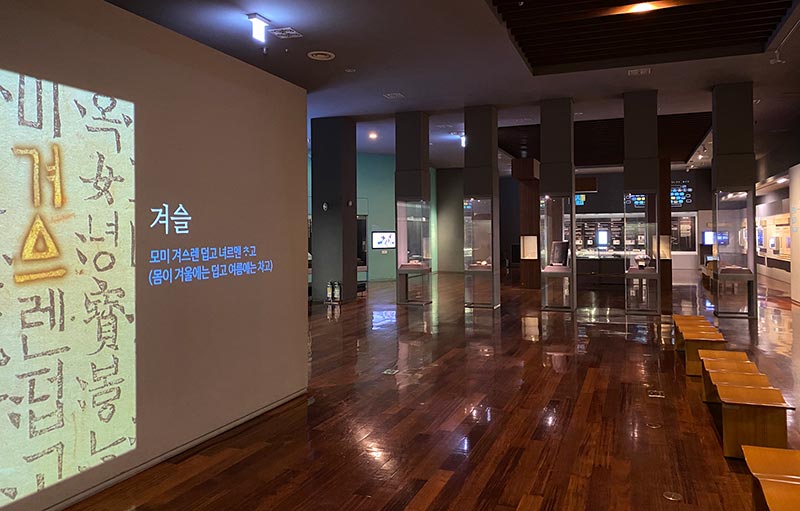
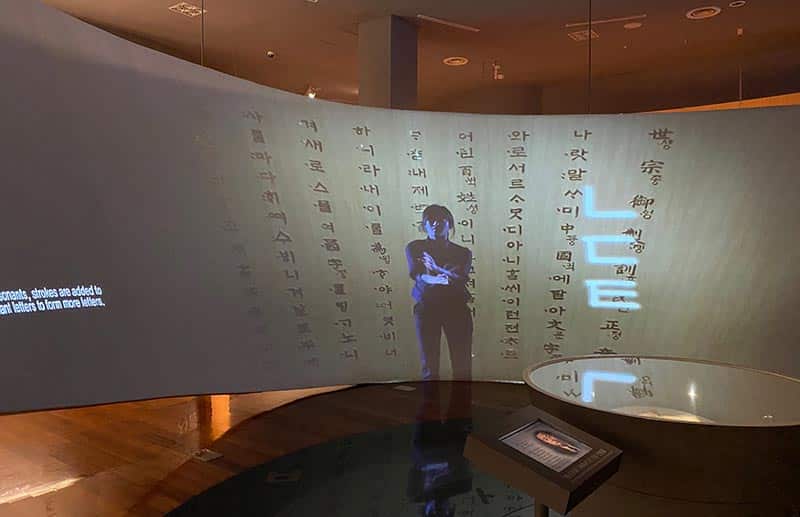
There were many displays and videos showing the meaning behind the characters and how to properly pronounce them.
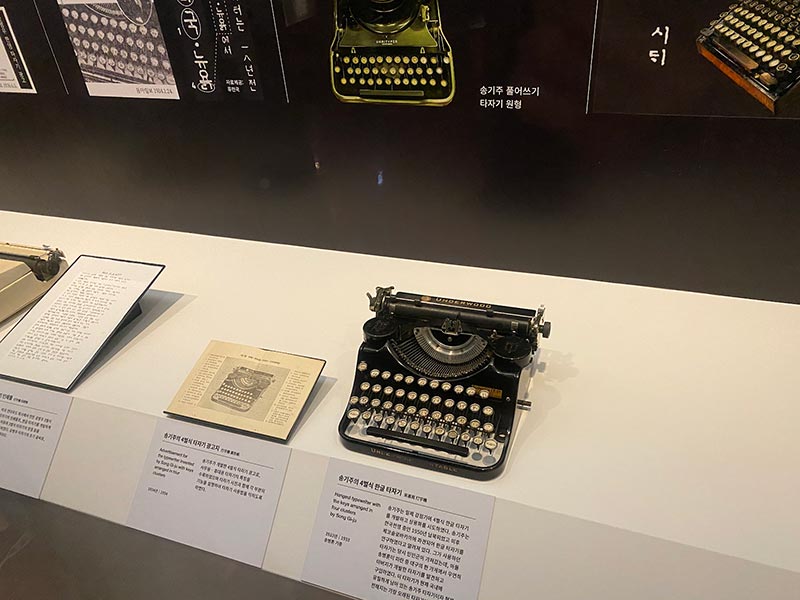
Here is a picture of a typewriter that uses the characters of Hangeul.
I was fascinated with learning about the history of Hangeul in this museum. I am currently learning how to read Hangeul and speak Korean, so visiting this museum was very helpful with providing me more insight into the language and why it was created.
I had an amazing time touring all three museums because each one provided different parts of Korean history. I’m so glad I was able to learn more about the country because I was so fascinated by the culture before I came here, and now I have even more of an appreciation for the history and culture of this amazing country.




